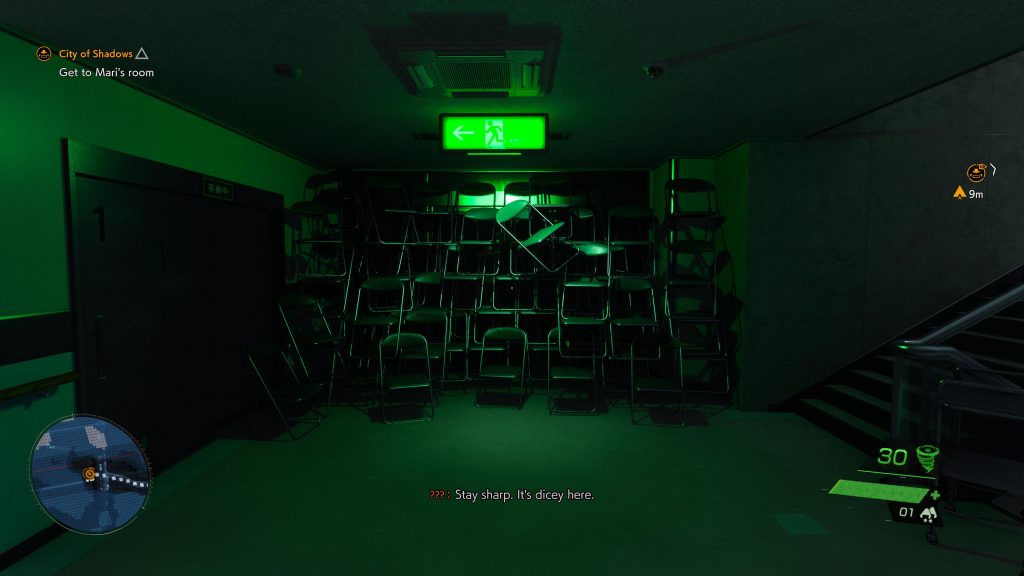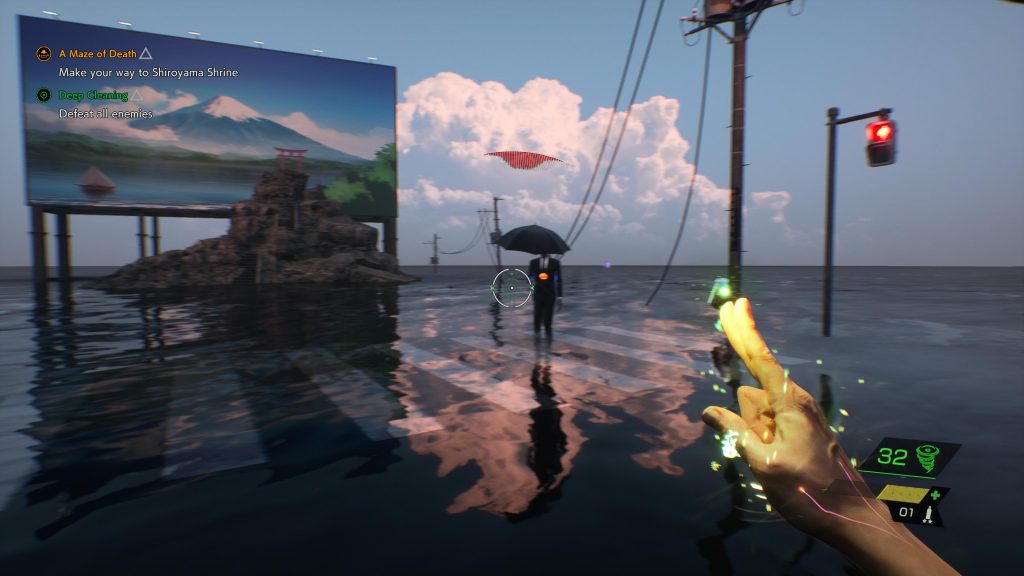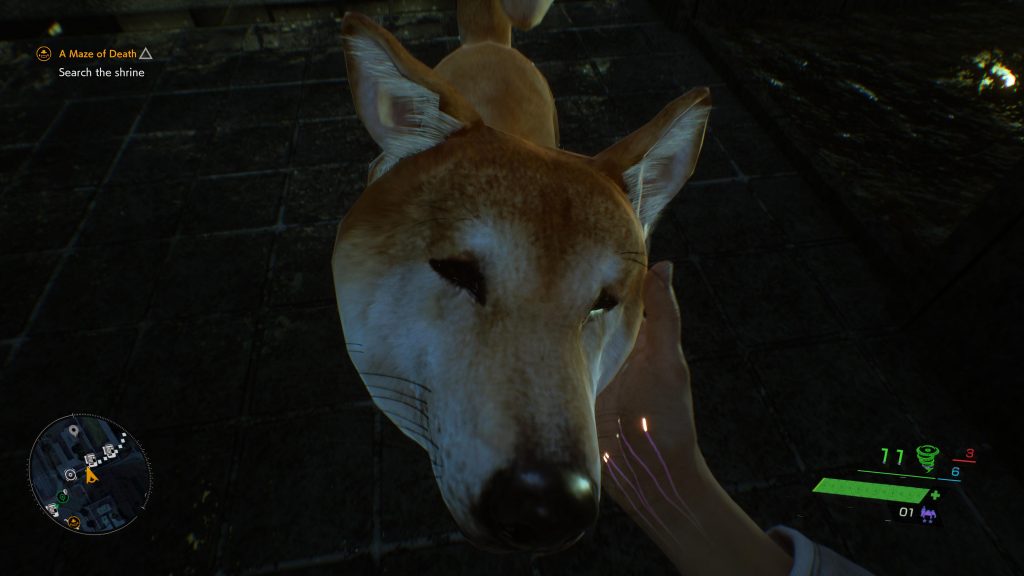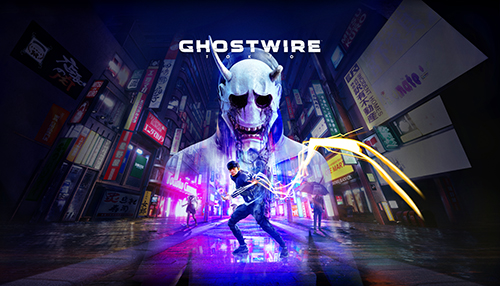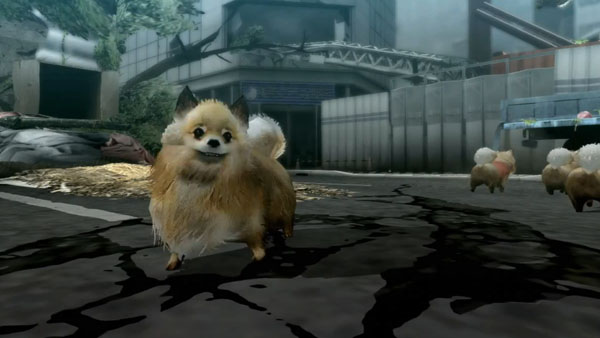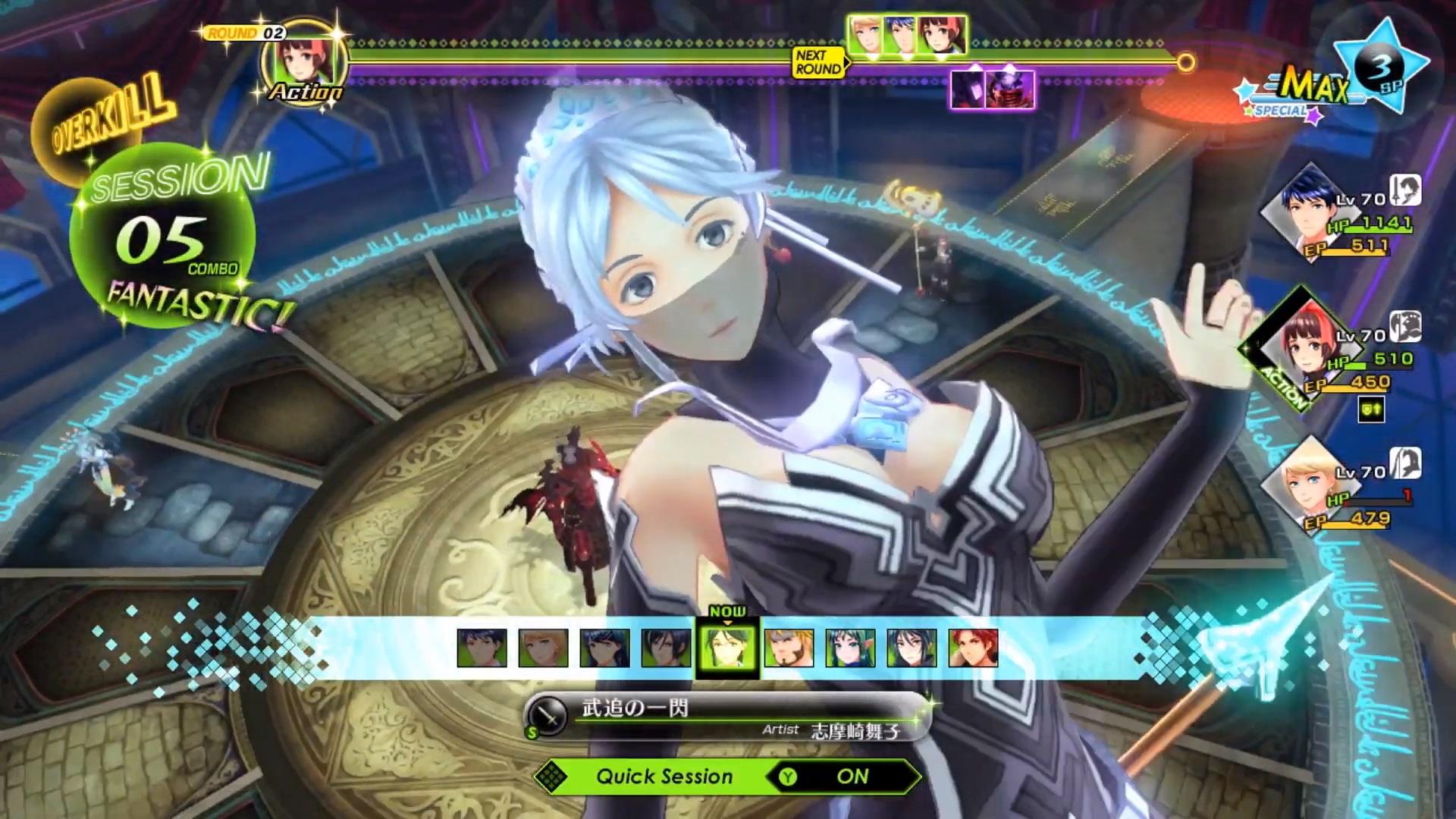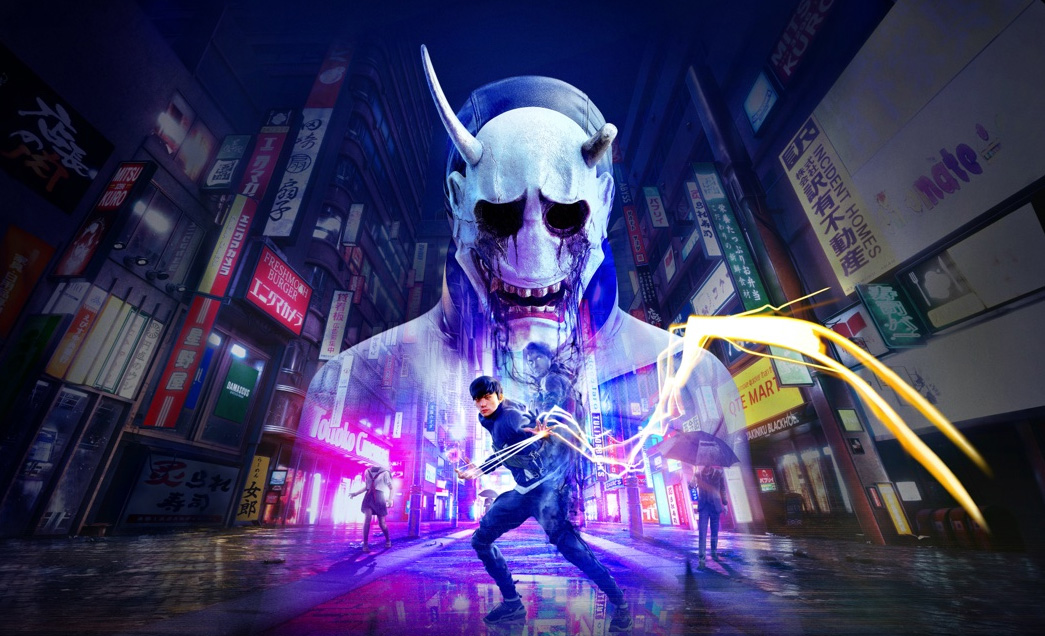
Ghostwire: Tokyo is a bizarre, mish-mash of an open-world game that draws upon a wide spectrum of both general horror iconography and specific Japanese spirituality, to create a weird, neon-lit nightmare alternate version of Tokyo. And that’s very much a good thing, or at least intriguing enough to make Ghostwire stand out in the marketplace with a unique feel and identity, that never stops being odd, but may entice you if you’re able to jive with its specific brand of strange.
Akito starts Ghostwire: Tokyo having what could be conservatively described as a bad day. For starters, he’s been hit by a car and killed. His sister is in hospital. Tokyo’s been filled with a spectral fog that has caused 99% of its population to disintegrate into spirit form, while disturbing monster ‘Visitors’ roam the streets. And, Akito now has to share his body with another wandering spirit, the ghost of a man known as ‘KK’ who had been preparing for this supernatural event. KK is able to empower Akito not only with enough life-force to revive him, but is also able to lend his own spiritual abilities to combat the demonic hordes now roaming Tokyo’s streets, led by the masked paranormal terrorist known as Hannya.
Ghostwire: Tokyo uses this premise – the crossing of the real world and the ‘other side’ – to weave a strange world that combines all kinds of elements from across the spectrum of horror and Japanese folkore. The city of Shibuya itself is rendered in fairly accurate detail, yet the rain which fills its streets isn’t made up of raindrops, but watery Japanese writing. The creatures which emerge from giant Torii gates are a mix of horror tropes you’ve seen elsewhere – tall, faceless Slenderman-style businessmen, headless students in sailor-fuku dresses, raincoat-wearing red-eyed menaces, and even Silent Hill-style nurses with distorted features. But, the influences don’t just stem from horror, with traditional Japanese spirits and yokai included, some cute and some imposing, which lend a broader cultural history to the spiritual invasion happening in Tokyo. Frequently, the locations Akito visits explicitly juxtapose the worlds of the old and the new in the city. The mix makes for a game that can bounce between spine-chilling ambushes, and light-hearted cat puns with a floating kitty yokai in a heartbeat, and it does so in the same strange appealing way that games like Yakuza pull off.
A lot of your time is spent combating the game’s various monsters using various forms of elemental magic, or ‘spiritual weaving’, which is based on Kuji-kiri hand gestures, along with various other weapons like Japanese seals or bows. Visually, this all looks pretty neat as you send gusts of wind, blades of water and lances of fire at your enemies with cool-looking hand movements, but actual combat itself can become repetitive, especially as each form of magic has only limited ammunition, which frequently needs replenishing from breakable items around the battlefield. It’s less a matter of the scarcity of survival horror, and more an annoyance that your wind bullets aren’t doing the damage you need to end a battle effectively as you keep scurrying around the field’s perimeter looking for ammo refills.
Of course, you can better prepare yourself for more difficult battles by exploring the open world Tokyo more thoroughly, finding shrines to pray at to increase your max ammunition, sucking up wandering spirits you find into paper dolls for experience points, and finding equipment to enhance certain abilities, while building out your skill tree. There’s several levels to each of your abilities, the best of which increase your options for traversal.
You see, there’s not only the ground level to Tokyo which is open for exploration, but with the ability to grapple to flying ‘tengu’ in the skies, you’re able to jet around the rooftops as well. While often these vantage points can be disappointingly empty of goodies, beyond occasional spirits to suck up, they provide an enjoyably quick way of getting around Tokyo when combined with your gliding ability. Both gliding and grappling can be upgraded to enable launching anywhere you choose, and soaring for extended periods of time, which add another layer to traversal beyond simple fast travel points between shrines.
Cleansing shrines not only activates them as fast travel points, but also reveals side missions in the areas of fog they dissipate. There’s quite a number, and while the gameplay they provide can be sometimes rote ‘clear waves of enemies at this location’, they nevertheless manage to throw up some interesting surreal environments and stories, which draw on specific Japanese spirits or customs, that actually act as pretty educational. There’s quite a few spooky ghost stories to experience, and while there’s nothing too scary for horror game veterans, the developers do manage to have a lot of fun with some creative visual effects and moments.
Running on PlayStation 5, there’s a range of visual modes to choose from. The default, Quality, looks the best, with ray-traced reflections enhancing the atmosphere of Tokyo, especially as ever-present rain puddles reflect the neon-soaked world around them. Performance increases the frame-rate cap from 30FPS in exchange for quality, but it never feels that smooth – neither do the ‘HFR’ variations of quality and performance either. While occasionally you’ll find a dodgy texture up close, the overall impression of Tokyo presented here is quite realistic, especially if you’ve been to Shibuya and are familiar with some of the landmarks and streets.
Ghostwire: Tokyo patches together genuine Japanese folklore, along with a myriad of monster influences, to create its own strange but compelling world and narrative. The options for combat and traversal are creative, and while some encounters become repetitive, there’s still quite a lot of odd sights and creepy hauntings to witness, making for one of the more engaging open world experience of its kind. There’s quite a lot to explore and collect if you intend on fully 100%ing the game (over 200,000 souls to save, in fact), but most players should be content with experiencing the main story and any side missions which interest them, and given their variety there should be at least a few. Strange sights, odd inclusions of humour and a steady flow of surprising moments combine to make this a spooky, spectral sensation – so long as you’re up for something weird in your (Tokyo) neighbourhood.
-Bizarre and unique visual design, inspired by Japanese folklore, is highly creative -Engaging and interesting missions, and side missions -Surprisingly lenient traversal options, including gliding over the rooftops of Tokyo -A decent sense of humour, and some neat horror moments too
-Combat, despite varied elemental powers, can feel repetitive -Several visual modes, but none of them feel terribly smooth

